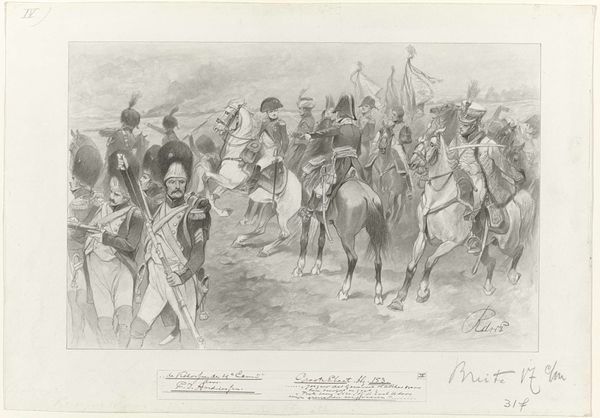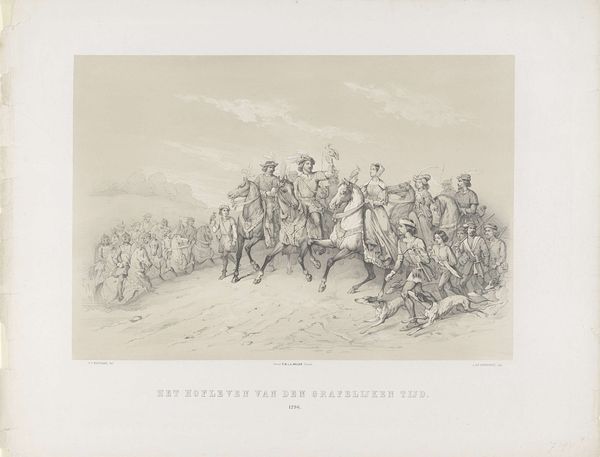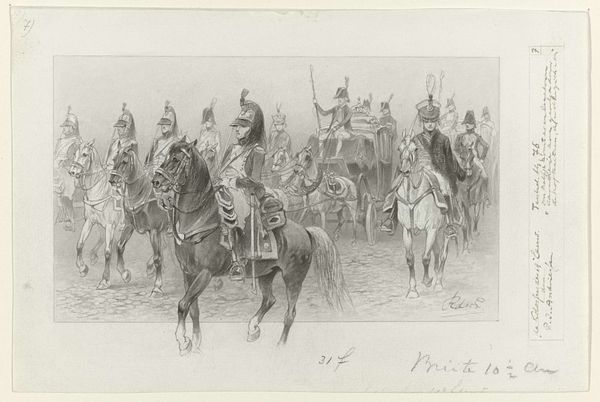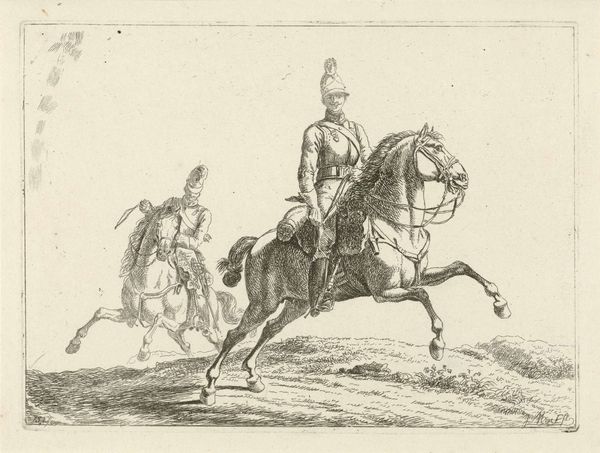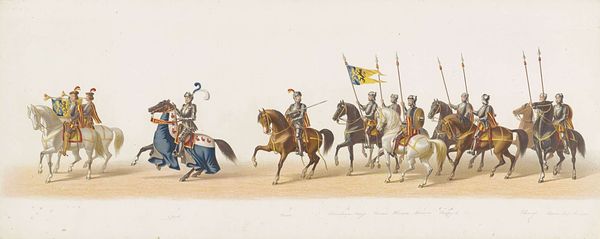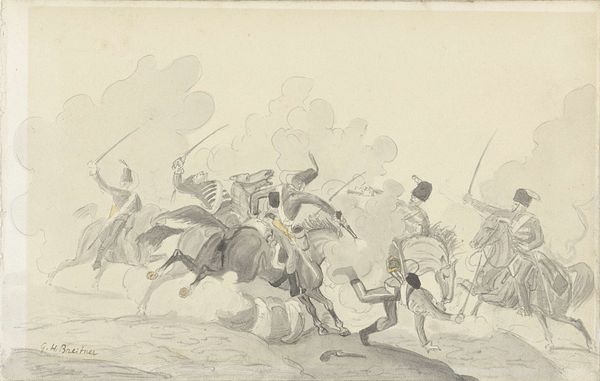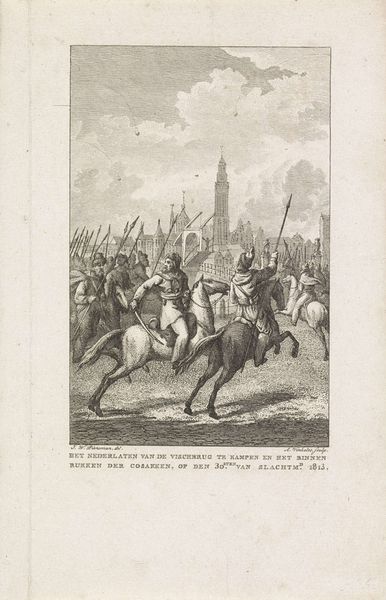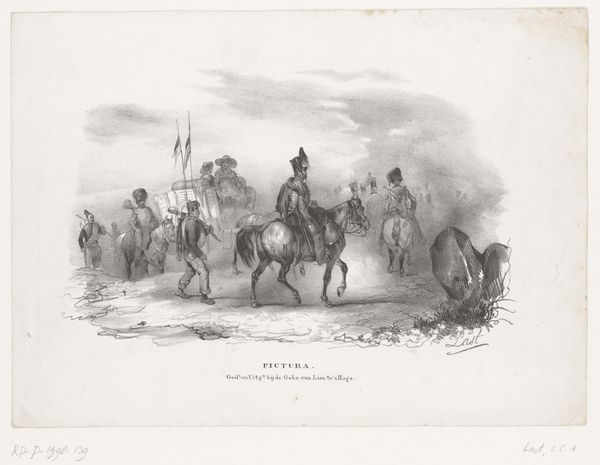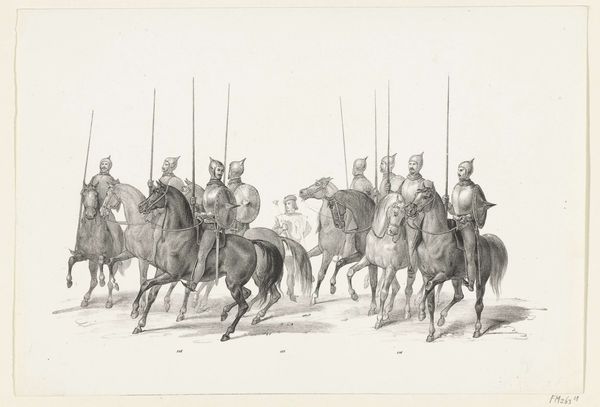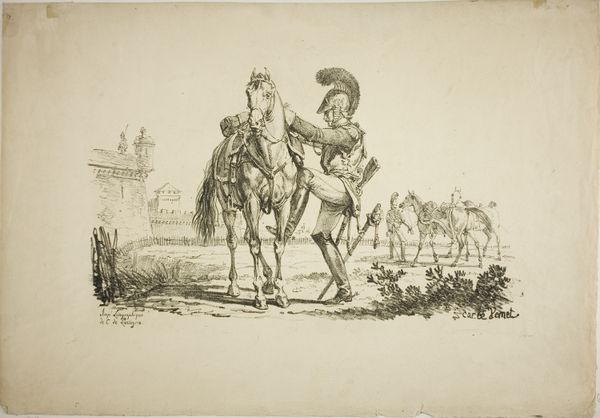
print, engraving
#
narrative-art
# print
#
romanticism
#
cityscape
#
history-painting
#
engraving
#
realism
Dimensions: height 349 mm, width 432 mm
Copyright: Rijks Museum: Open Domain
Curator: This print by François Grenier, dating to 1819, depicts the capture of Dutch ships by French cavalry in 1795. Editor: My immediate impression is one of controlled chaos. The scene teeters between order and disarray. The lines are meticulous, yet the overall image is dense with activity. Curator: Indeed, Grenier’s attention to detail is notable. The work underscores the social upheaval during the French Revolution, highlighting how traditional naval power succumbed to the unexpected force of cavalry. Editor: Structurally, the artist employs a stark tonal range in the engraving. The repetition of the horses creates a rhythm that draws my eye deeper into the space, to the masts and sails that are barely visible at the horizon. This strategic compression amplifies the piece’s impact. Curator: This method emphasizes not just the event itself, but also the changing social and economic landscape. The traditional power structure embodied in ships now relies upon, even defers to, the rise of the modern cavalry, supported by changing supply lines and class structures. Editor: But notice the composition again. It suggests a very rigid arrangement. It uses very limited, but detailed tonal gradations. I also find that it has a specific affect, and perhaps even reinforces the order, no matter how much disorder is captured as content. Curator: The print circulated widely, becoming an accessible way to consume imagery of revolutionary power shifts. The scale of distribution itself played a crucial role in shaping public understanding. Editor: Finally, Grenier utilizes light, shadow, and linear perspective. This lends a depth and intensity to the image, pulling the viewer into that historic moment. A testament to romantic style—despite being in print, no less! Curator: Absolutely. Viewing the work as an engraving, a mode of visual communication, also helps in seeing art’s capacity to promote changes in how historical narratives and political relationships are understood and internalized. Editor: A deep dive! The conversation helped in uncovering the many-layered compositional elements within this image. I find the historical contextualization equally, if not more fascinating. Thank you!
Comments
No comments
Be the first to comment and join the conversation on the ultimate creative platform.

